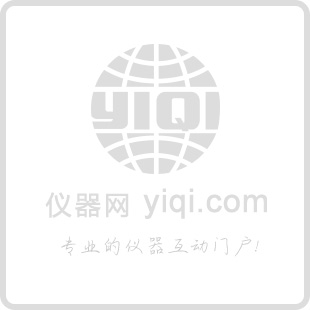| Clone | 17A2 |
| Isotype | Rat IgG2b, κ |
| Reactivity | Mouse |
| Immunogen | γδTCR-positive T-T hybridoma D1 |
| Formulation | Phosphate-buffered solution, pH 7.2, containing 0.09% sodium azide. |
| Preparation | The antibody was purified by affinity chromatography. |
| Concentration | 0.5mg/ml |
| Recommended Usage | Each lot of this antibody is quality control tested by immunofluorescent staining with flow cytometric analysis. For immunofluorescent staining, the suggested use of this reagent is ≤0.25 µg per million cells in 100 µl volume. It is recommended that the reagent be titrated for optimal performance for each application. |
| Applications | FC - Quality tested
IHC, IP - Reported in the literature |
| Application Notes | The 17A2 antibody recognizes ε/γ (but not ε/δ) of the CD3 complex. The 17A2 antibody can induce T cell activation and has been reported to deplete CD3+ cells in vivo. Additional reported applications (for the relevant formats) include: immunoprecipitation1, complement-mediated cytotoxicity1,3, immunohistochemical staining of acetone-fixed frozen sections1,4, in vitro stimulation of T cells1 and depletion of CD3+ cells in vivo2. The LEAF™ purified antibody (Endotoxin <0.1 EU/μg, Azide-Free, 0.2 μm filtered) is recommended for functional assays (Cat. No. 100208). For in vivo studies or highly sensitive assays, we recommend Ultra-LEAF™ purified antibody (Cat. No. 100238) with a lower endotoxin limit than standard LEAF™ purified antibodies (Endotoxin <0.01 EU/µg). |
| Application References | 1. Miescher GC, et al. 1989. Immunol. Lett. 23:113. (IP, IHC, Activ, CMCD)
2. Mysliwietz J, et al. 1992. Blood 80:2661. (Deplete)
3. Wu L, et al. 1991. J. Exp. Med. 174:1617. (CMCD)
4. Zhang Y, et al. 2002. J. Immunol. 168:3088. (IHC)
5. Zan H, et al. 2005. EMBO J. 24:3757.
6. Morgado P, et al. 2011. Infect Immun. 79:4401. PubMed
7. Xiao J, et al. 2012. Arterioscler Thromb Vasc Biol. 32:386. PubMed " |
| Description | CD3, also known as T3, is a member of the Ig superfamily and primarily expressed on T cells, NK-T cells, and at different levels on thymocytes during T cell differentiation. CD3 is composed of CD3ε, δ, γ and ζ chains. It forms a TCR complex by associating with TCR α/β or γ/δ chains. CD3 plays a critical role in TCR signal transduction, T cell activation, and antigen recognition by binding the peptide/MHC antigen complex. |
| Storage | The antibody solution should be stored undiluted at 4°C. |
 Purified anti-mouse CD3 纯化的小鼠CD3抗体
Purified anti-mouse CD3 纯化的小鼠CD3抗体
 山羊抗小鼠IgG抗体的生物素标记的亲和纯化抗体
山羊抗小鼠IgG抗体的生物素标记的亲和纯化抗体
 纯化辣根过氧化物酶(HRPO)标记兔抗小鼠 IgG抗体,100微升
纯化辣根过氧化物酶(HRPO)标记兔抗小鼠 IgG抗体,100微升
 130-095-599 Stemgent® Rabbit anti-Human Vimentin Antibody Stemgent®纯化的兔抗小鼠/人抗体的Pax6
130-095-599 Stemgent® Rabbit anti-Human Vimentin Antibody Stemgent®纯化的兔抗小鼠/人抗体的Pax6
 纯化兔抗小鼠IgG抗体F(ab')2片段,1 0毫克
纯化兔抗小鼠IgG抗体F(ab')2片段,1 0毫克
 纯化兔抗小鼠IgG抗体F(ab‘)2片段,1毫克
纯化兔抗小鼠IgG抗体F(ab‘)2片段,1毫克
 纯化生物素(Biotin)标记兔抗小鼠 IgG抗体,1毫升
纯化生物素(Biotin)标记兔抗小鼠 IgG抗体,1毫升
 纯化生物素(Biotin)标记兔抗小鼠 IgG抗体,100微升
纯化生物素(Biotin)标记兔抗小鼠 IgG抗体,100微升
 纯化异硫氰酸荧光素(FITC)标记兔抗小鼠 IgG抗体,100微升
纯化异硫氰酸荧光素(FITC)标记兔抗小鼠 IgG抗体,100微升
 纯化异硫氰酸荧光素(FITC)标记兔抗小鼠 IgG抗体,1毫升
纯化异硫氰酸荧光素(FITC)标记兔抗小鼠 IgG抗体,1毫升
 Anti-Mouse IgG (免疫亲和纯化) 小鼠IgG抗体
Anti-Mouse IgG (免疫亲和纯化) 小鼠IgG抗体
 6小鼠蛋白酶亲和纯化多克隆抗体
6小鼠蛋白酶亲和纯化多克隆抗体